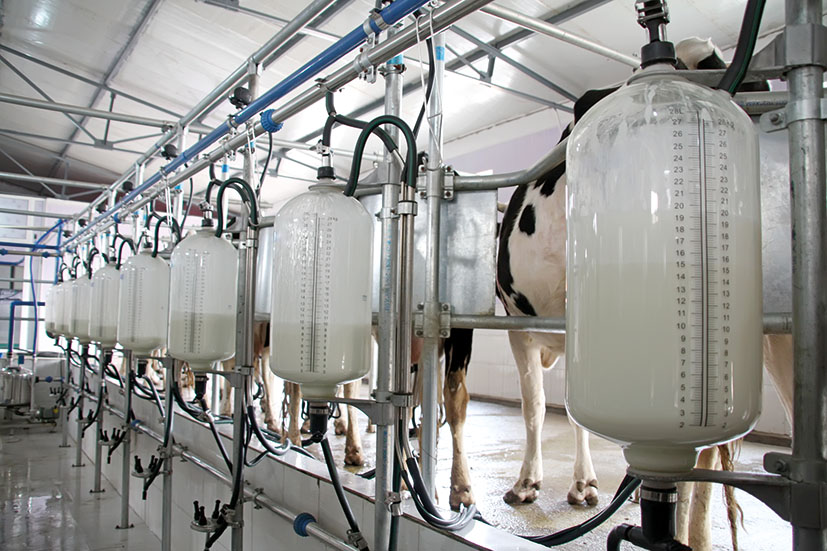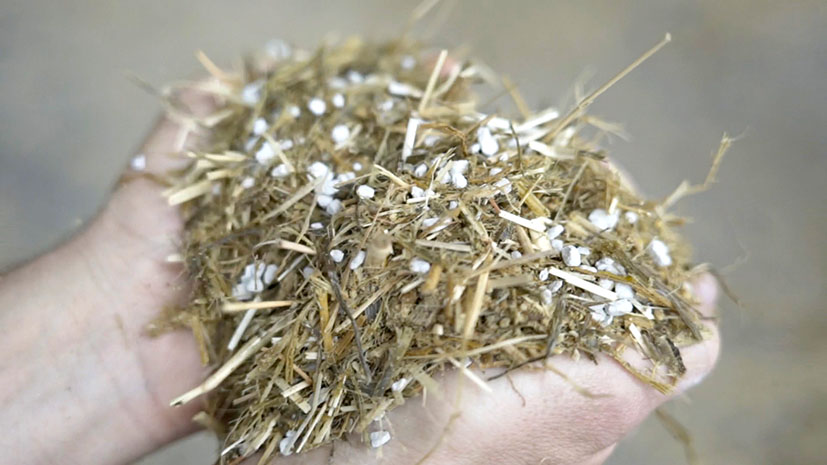Reduce the risk of SARA after a wet summer
23rd August 2024
Wet weather often means a ration based on high acid load forages – and a greater risk of sub-acute rumen acidosis.

It is widely recognised in the UK dairy industry that high yielding herds fed on diets rich in rapidly fermentable carbohydrates carry a much higher risk of developing sub-acute rumen acidosis (SARA).
This is particularly likely if the ration is based on high acid load forages, often the case after a wet summer. David Bonsall, head of animal nutrition at Omya UK, says SARA can be kept at bay through careful management and the addition of OmyaFeed C MgO to dairy rations.
The problem with SARA
“Animals are considered to have SARA when their rumen pH stays below 6 for an extended period,” he explains. “This happens as a result of feeding high energy diets that contain high levels of rapidly fermentable carbohydrates such as cereals. The problem with SARA is that it is hard to diagnose and can often be mistaken for other issues. It takes a hold gradually over time and once established it can significantly reduce milk output and fertility as well as creating welfare issues in the herd.”
SARA is a widespread issue in the UK dairy herd and is caused by the accumulation of volatile fatty acids (VFAs) in the rumen. As feed is digested, VFAs including acetate, propionate and butyrate are produced. If this happens quickly, as it does with high sugar and starch rations, then the pH in the rumen drops.
A prolonged decrease in rumen pH leads to changes in the microbial population and can damage the lining of the rumen. Symptoms include reduced feed intake, weight loss, diarrhoea and lameness. In addition, it predisposes the cow to higher risk of other issues such as ketosis and displaced abomasum as well as a measurable decline in productivity. It is estimated that SARA affects more than a quarter of the UK dairy herd with a huge associated cost to the industry.
Doing a very good job
Mr Bonsall says SARA can be prevented by adding OmyaFeed C MgO to the ration. “This highly palatable compacted rumen buffer is made from micronized ground calcium carbonate and magnesium oxide. It can be added to the ration as a supplement to eliminate SARA and provide highly available calcium and magnesium.
It’s now widely used across UK dairy farms and is doing a very good job, as expected following its success in independent trials. The key benefits to dairy farmers beyond its efficacy are the lower dosage rates needed and its low cost. Farmers can prevent SARA for only 7 pence per cow per day.”
OmyaFeed C MgO is being used as an alternative to sodium bicarbonate, which has traditionally been used as a buffer in the dairy industry. As Mr Bonsall explains, OmyaFeed C MgO has a number of advantages over sodium bicarbonate.
“Although sodium bicarbonate is an effective pH neutraliser, it needs to be fed at very high rates and only works for a short period of time because of its high solubility and therefore rapid elimination from the body. Cows only need 130g of OmyaFeed C MgO each day which is considerably less than sodium bicarbonate, creating space in the ration for other feedstuffs or allowing the farmer to reduce the overall cost.”

Trial results
In independent trials carried out by the Institute of Agrifood Research and Technology (IRTA) in Spain, cows supplemented with OmyaFeed C MgO spent fewer hours per day with pH lower than 5.8 than those supplemented with sodium bicarbonate, without affecting milk yield. Milk proteins were also higher, which gave a better fat: protein ratio.
The trial also measured bioavailability for both calcium and magnesium. “We measured calcium and magnesium absorption in dairy cows and found that even with lower calcium intake in the cows fed with OmyaFeed C MgO, there was no significant difference in the amount of calcium digested. That shows more efficient calcium absorption.
For magnesium, the intake was a bit higher, but the absorption difference was 60% higher compared with a conventional mix. This is an advantage for dairy farmers given the importance of calcium and magnesium to cow health and productivity.”
SARA can have a significant impact on animal welfare, milk production and farm profitability. Mr Bonsall concludes: “The addition of OmyaFeed C MgO to the ration prevents this insidious condition from taking hold of the herd. It is a low dust, compacted product which mixes easily in the ration without segregation or settling. It can be fed as part of a concentrated feed mix or added to silage. Because it is made from micronized minerals, it has a large surface area which improves solubility and enables rapid absorption. Customers in the UK are seeing yield increases of around 0.5 litres/cow when replacing sodium bicarbonate with OmyaFeed C MgO as well as increased butterfat.”
OmyaFeed C MgO is produced using compaction technology and is certified under Feed Chain Alliance (FCA) standards. It is available in 25kg sacks or 600kg big bags for ease of handling on farm.
For more information regarding OmyaFeed C MgO visit the Omya website.
Read more livestock news.
